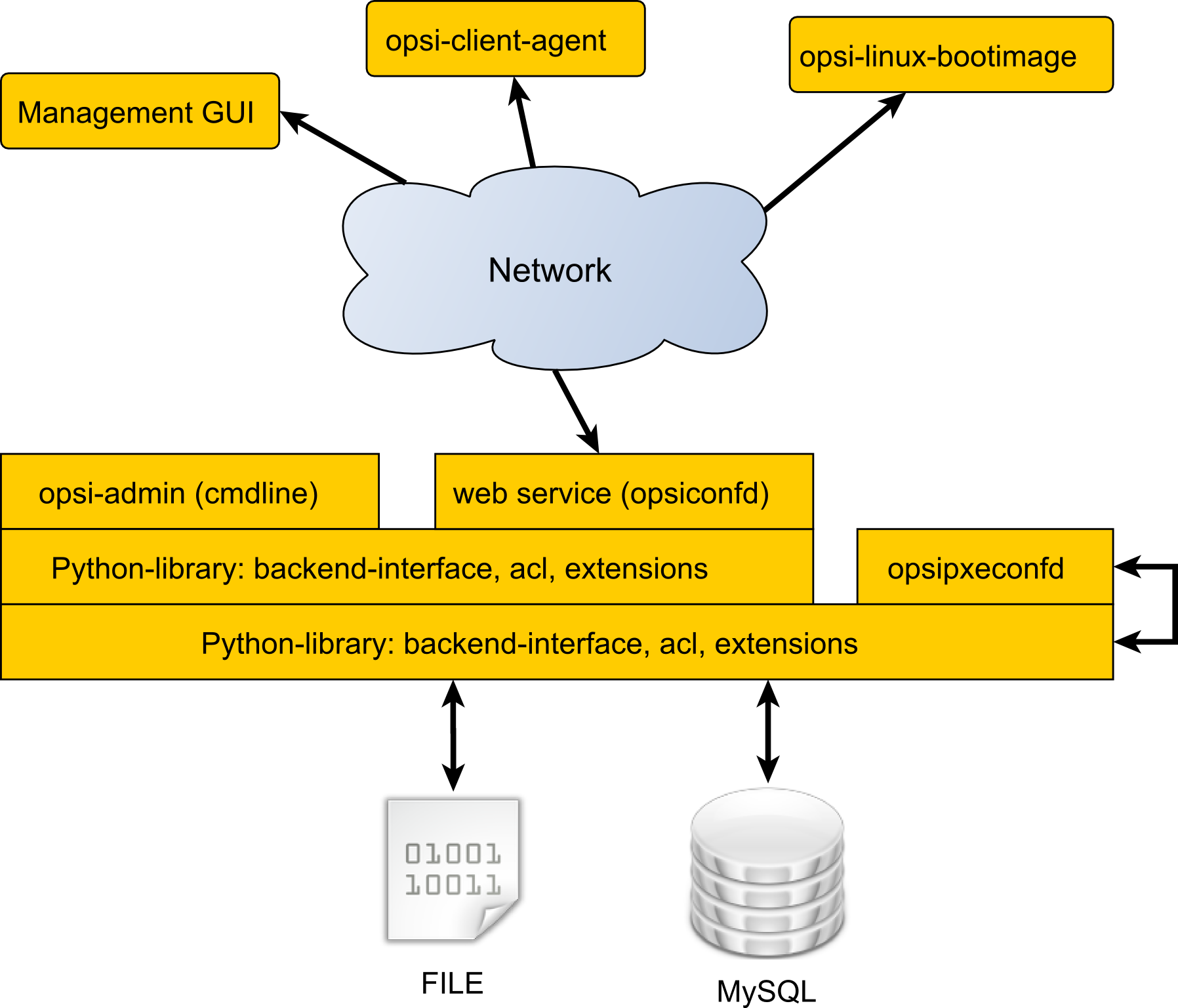Overview of opsi
Tools for automated software distribution and operating system installation are important and necessary tools for standardization, maintainability and cost saving of larger PC networks. Normally the application of such tools comes along with substantial royalties, whereas opsi as an open source tool affords explicit economics. Expenses thereby arise only from performed services like consulting, training and maintenance, and perhaps from low cofunding rates if you like to use some of the non free modules.
Although the software itself and the handbooks are free of charge, the process of introducing any software distribution tool is still an investment. To get the benefit without throwbacks and without a long learning curve consulting and education of the system administrators by a professional partner is recommended. uib offers all these services around opsi.
The opsi system as developed by uib depends on Linux-servers. They are used for remote installation and maintenance of the client OS and the client software packets ("PC-Server-Integration"). It is based as far as possible on free available tools (GNUtools, SAMBA etc.). The complete system all together is named opsi (Open PC-Server-Integration) and with its configurability is a very interesting solution for the administration challenges of a large computer park.
Experience
opsi is derived from a system, which is in use since the middle of the 90’s with more than 2000 Client-PCs in different locations of a state authority. Since that time it has continuously been adapted to the changing Microsoft operating system world. As a product opsi is now accessible for a broad range of interested users.
You can find an geographical overview of the registered opsi-installations at: opsi-map
opsi features
The core features of opsi are:
-
automatic software distribution
-
automatic operating system installation
-
hard- and software inventory
-
comfortable control via the opsi management interface
-
support of multiple depot-servers
opsi Extensions
-
Management of licenses
-
MySQL-Backend
-
Nagios Connector
-
Installation ab Shutdown
-
Local Image Backup (Rapid client restore of student computers. For public authorities (e.g. schools) only)
-
Linux Agent
-
WAN Extension (Support for clients behind slow connections)
-
User Profile Management (manipulation Profiles even with Roamin Profiles)
-
OTRS::ITSM Connection - via KIX4OTRS by cape IT gmbh
Structure
The configuration of opsi requires some data management. All non-server components are using a web service for data exchange with the opsi server. They exchange data via the 'opsiconfd', and the 'opsiconfd' forwards the data to the backend manager which passes the data into the selected backend.
opsi supports different backends: Backends:
-
File based
-
MySQL based

More details you will find at opsi data storage (backends).
The backend configuratin will be found at the files in ther directories
/etc/opsi/backendManager and /etc/opsi/backends.

The configuration files in /etc/opsi/backends define the backends.
Which backend is used for which data, is configured in the file
/etc/opsi/backendManager/dispatch.conf.
The file /etc/opsi/backendManager/acl.conf defines who has access to which
methods.
Below the directory /etc/opsi/backendManager/extend.d there could be files
which defines extended opsi methods. So you will find here for example the files which define the action based ('legacy') methods by mapping them to the object based methods (/etc/opsi/backendManager/extend.d/20_legacy.conf).
A more detailed reference of these configuration files you will find at